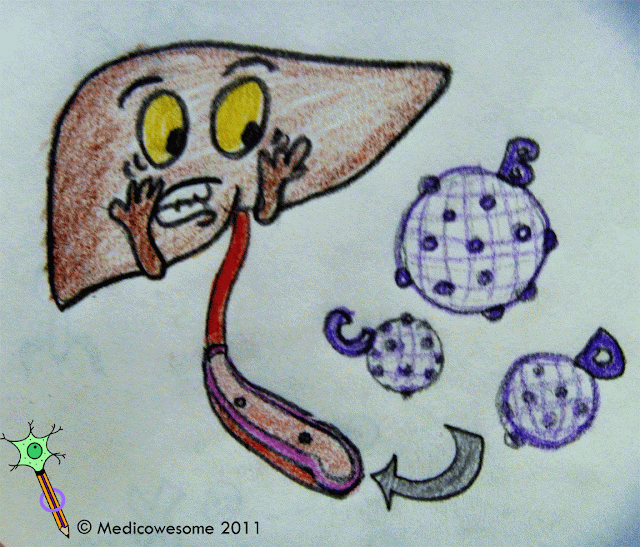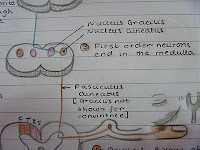Hey guys.. I'm gonna tell you about Sciatica today!
But first, lets see a summary of the distribution of the sciatic nerve ^_^
The sciatic supplies nearly the whole of the skin of the leg, the muscles of the back of the thigh, and those of the leg and foot
It is the largest nerve in the body! :O
It has the tibial part which is a ventral division of anterior primary rami of L4 L5 S1 S2 S3 nerves
and the common peroneal part.. the dorsal division of anterior primary rami of L4 L5 S1 S2
[My mnemonic was CD.. Common peroneal - Dorsal division & since C is the 3rd alphabet so its smaller than T which is the 20th letter of the alphabet.. hence it has lesser nerve roots]
Sciatica - The
compression or irritation of Sciatic nerve.. which causes pain..
Now how does that happen? :O
It may be due to
tumors, pregnancy or infection of muscles [causing inflammation and irritation]
I'll elaborate on
spinal disc herniation and
Piriformis syndrome :D
Nerves called the spinal nerves or nerve roots, branch off the spinal cord and pass out through a hole in each of the vertebrae called the foramen
Now if you have studied the spinal cord well.. You'll know that the spinal disc are right up against the nerve..
If
herniation of disc occurs.. It'll
push up against that nerve.. which will create pain that is transmitted all the way down to the sciatic nerve
Also there is a muscle called Piriformis.. which runs from the sacrum to the hip.. in most people
muscle is on top of the sciatic nerve.. Which is normal
In some people the
nerve pierces the muscle.. which causes compression of the nerve and hence the Piriformis syndrome
 |
| Course of Sciatic nerve - Description is pending and will be updated later :) |
 Diagnosis:
The Straight leg raise
Diagnosis:
The Straight leg raise, also called Lasegue's sign is done to determine whether the patient has a herniated disk
With the patient lying down on his back.. the examiner lifts the patient's leg while the knee is straight
If pain in the sciatic distribution is reproduced between
30 and 70 degrees passive flexion of the straight leg the test is positive
Tenderness in the area of the sciatic notch indicates Piriformis syndrome
Low back and leg pain? Check Sciatica! :D
That's all!
Thank you so much for reading :)
-ikaN













.jpeg)













